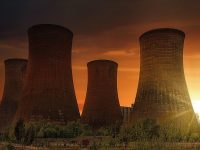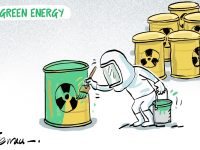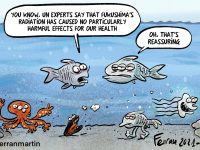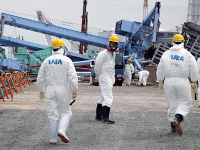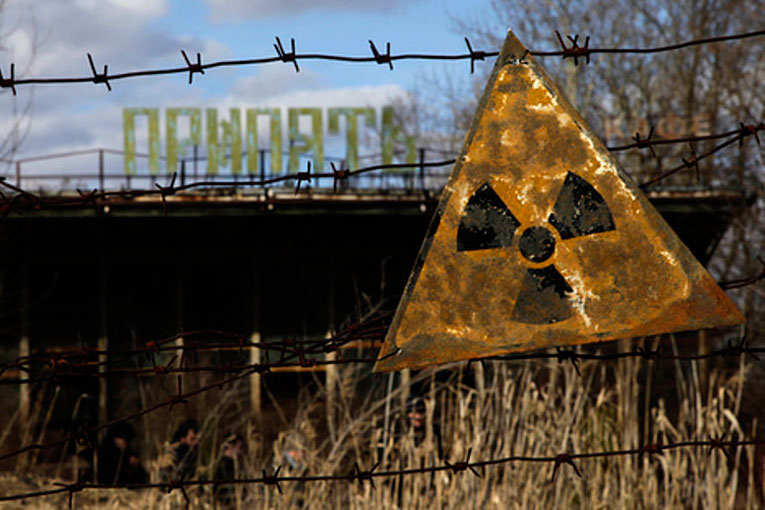

PasT
The Chernobyl accident was a true ecological and human catastrophe. In addition to direct victims, the malformation cases and the considerable raise of some types of cancers, such as thyroid gland cancer, the effects of Chernobyl have taken a toll on the area. Around 350,000 people had to leave their homes and 150,000 km2 of land got polluted as a result of a technical error in the nuclear plant. That is 5.6 times the area of the Valencia region. Vicent Martínez Sancho, professor of physics at the University of Valencia and author of The use of nuclear energy (Homo sapiens?), said once in an interview for Mètode that: «if Cofrents blows up, we know already: everyone will have to emigrate».
Radiation in Chernobyl was 500 times higher than what the atomic bomb released in Hiroshima in 1945. The accident was caused by a human error, a badly designed nuclear plant and a failed safety test. Reactor number 4 was closed for maintenance. The technicians decided to test for how long the turbines would be able to provide energy to the cooling system while the reactor remained turned off. The power of the reactor escalated when the water course reduced and the temperature elevated excessively, which caused an explosion. The fire went on for nine days; radiation, for decades.
The accident polluted a large extension of land across Ukraine, Belarus and Russia and it also affected wide areas of Europe and Asia. A Greenpeace report in 2006 claimed that, in these three countries, the accident caused around 200,000 deaths between 1990 and 2004. Another report, this one issued in April 2011, showed that food grown in certain areas of Ukraine was still polluted 25 years later.
However, there is no agreement on the exact number of deaths and people affected by the accident. In 2005, a group of experts sponsored by the UN and the WHO released another report called Chernobyl’s Legacy: Health, Environmental and Socio-Economic Impacts. The conclusion of this report differs from the one released by Greenpeace. The report says that: «It is impossible to assess reliably, with any precision, numbers of fatal cancers caused by radiation exposure due to the Chernobyl accident – or indeed the impact of the stress and anxiety induced by the accident and the response to it».
Present
In Spain, a moratorium was put on nuclear power from the beginning of the 80s to 1997, thanks to the pressure exerted by a sector of the scientific community and environmental movements. Nowadays, six plants are still working in the country, two of them with two reactors (Almaraz and Ascó), according to the Secretary of State for Energy. According to data from the International Atomic Energy Agency (IAEA), there are around 440 functioning nuclear reactors in the world.
Today, the United States and France are the countries that produce more nuclear power, with 104 and 58 plants respectively. On the other hand, Germany leads to way to the nuclear power phase-out, starting right after the Fukushima accident. The phase-out was approved in 2011 by Chancellor Angela Merkel and then ratified in the fifth anniversary of the catastrophe. «In 2020, commercial nuclear power will be history» stated the Vice Chancellor and Minister for Economic Affairs and Energy, Gabriel Sigmar.
The disaster occurred in Japan on 11 March 2011, as well as the Chernobyl accident, were rated as level 7 on the International Nuclear Events Scale (INES), which measures the severity of nuclear and radiological accidents. This is the highest possible level – in 1957, the Mayak plant suffered an accident that was rated as level 6. The series of accidents occurred in the Fukushima plant caused by an earthquake and the following tsunami exposed the human, environmental and economic cost of these disasters. They had a huge impact on the industry at an international level. In Chernobyl, containing radiation is still a struggle today. In May 1986, a month after the disasters, works were started to build a sarcophagus to cover tons of radioactive waste. However, the effect of this protection would wear out after 25 years. And so, in 2012 the construction of a new sarcophagus began, this one designed to last for a hundred years at least. The main goal is to prevent the dispersion of the remaining radiation.
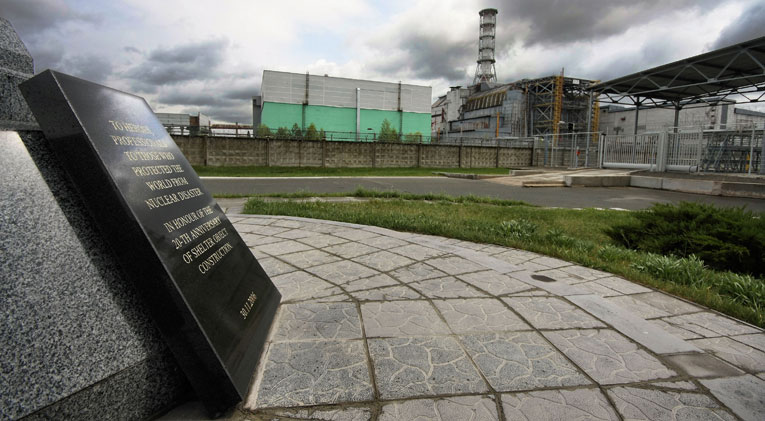
Nuclear energy can cause serious accidents, it produces long-lasting waste and it encourages nuclear proliferation. Nuclear power expert Yves Marignac said in an interview for Mètode that the «current energy system is not sustainable». He said that, in any case, it will not be possible to attain the current production while preserving the environment, not with nuclear power, and neither with renewable energies. In this sense, he claimed that «it is necessary to reflect on a transition towards a model based on controlled consumption. This implies a more intelligent and efficient use of the energy, thinking how and why we use it». Therefore, his bet was on renewable energies as the most sustainable option, even if they are not problem free.
Jesús Navarro and José L. Tain, researchers at the Institute of Corpuscular Physics (National Scientific Research Council-University of Valencia) published in 2009 the following article on Mètode: «Nuclear: what fear?» (not available in English at the moment). There, they listed several reasons in favor of maintaining or even increasing the number of nuclear plants: the increase of energy demand all over the world, the need to control and reduce the emission of greenhouse gasses – CO2 in particular –, the exhaustion of fossil fuels or the cheap cost of nuclear power compared with other resources. Regarding the weak point of nuclear power, in the article they pointed out as an advantage the fact that nuclear waste is located and controlled, unlike fossil fuel waste, which is freely emitted into the atmosphere and ends up spreading all over the planet.
However, in words of the aforementioned Vicent Martínez Sancho: «radioactive waste has no solution, no matter how many storage solutions are built to last at least fifty or sixty years. That is nothing. After all those years, radioactive waste will be there. After thousands and millions of years, it will still be there. What states and the industry do not say is that they are pushing the problem forwards: after sixty years, the storage will wear out and the waste will still be there».
Marta Navarro. Journalism student at the University of Valencia.
© Mètode 2016.

